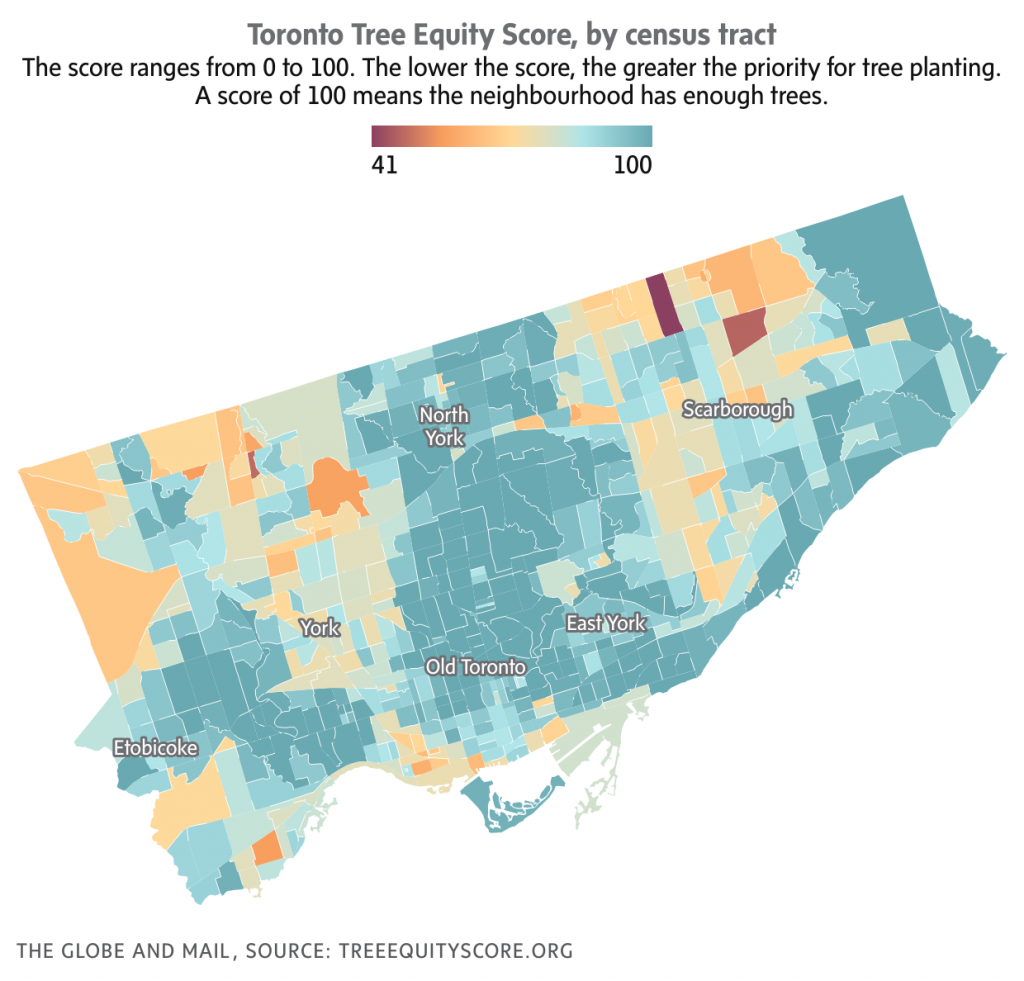A deeper dive – Low-income and racialized neighbourhoods tend to have fewer trees. Why?
Jill Mahoney is a Globe enterprise reporter focused on housing and real estate. For this week’s deeper dive, she talks about tree equity.
I’ve been interested in Toronto’s trees since I did an investigation into how the city manages its sprawling urban forest several years ago.
So I was curious when I learned that a new online tool had been developed to measure Toronto’s “tree equity,” which refers to the fair distribution of trees across the city.
The tool found that Toronto is a city of arboreal haves and have nots: Neighbourhoods with lower incomes and more racialized residents have fewer trees.
“Trees are critical urban infrastructure and really essential to public health and well-being,” said Janet McKay, executive director of Local Enhancement and Appreciation of Forests (LEAF), a non-profit organization that helped develop the tree equity score analyzer.
McKay is hopeful that the tool’s ability to identify tree inequity at a neighbourhood and street level will help the city and community groups better target their work.
“Everyone deserves access to the benefits that trees provide – environmental, health benefits and economic benefits. And with climate change on us now, the physical and mental health benefits offered by trees are just more important than ever.”
Most large cities in Canadian and United States are in a state of tree inequity. While there isn’t detailed research yet, it is so far safe to say that Toronto is similar to other large cities where there’s a relationship between higher income and higher canopy cover.
Check out the full conversation with McKay, where she answers more about how tree equity is measured, what factors are at play and what steps should be taken to increase canopy equity.
– Jill
THE GLOBE AND MAIL

